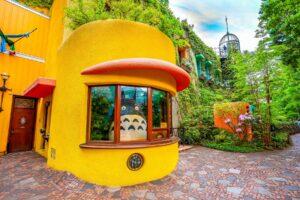Fodor's Expert Review Tokei-ji Temple
A Zen temple of the Rinzai sect, Tokei-ji holds special significance for the study of feminism in medieval Japan. More popularly known as the Enkiri-dera, or Divorce Temple, it was founded in 1285 by the widow of the Hojo regent Tokimune as a refuge for the victims of unhappy marriages. Under the shogunate, a husband of the warrior class could obtain a divorce simply by sending his wife back to her family. Not so for the wife: no matter what cruel and unusual treatment her husband meted out, she was stuck with him. If she ran away, however, and managed to reach Tokei Temple without being caught, she could receive sanctuary at the temple and remain there as a nun. After three years (later reduced to two), she was officially declared divorced. The temple survived as a convent through the Meiji Restoration of 1868. The last abbess died in 1902; her headstone is in the cemetery behind the temple, beneath the plum trees that blossom in February. Tokei Temple was later reestablished as a monastery.
The... READ MORE
A Zen temple of the Rinzai sect, Tokei-ji holds special significance for the study of feminism in medieval Japan. More popularly known as the Enkiri-dera, or Divorce Temple, it was founded in 1285 by the widow of the Hojo regent Tokimune as a refuge for the victims of unhappy marriages. Under the shogunate, a husband of the warrior class could obtain a divorce simply by sending his wife back to her family. Not so for the wife: no matter what cruel and unusual treatment her husband meted out, she was stuck with him. If she ran away, however, and managed to reach Tokei Temple without being caught, she could receive sanctuary at the temple and remain there as a nun. After three years (later reduced to two), she was officially declared divorced. The temple survived as a convent through the Meiji Restoration of 1868. The last abbess died in 1902; her headstone is in the cemetery behind the temple, beneath the plum trees that blossom in February. Tokei Temple was later reestablished as a monastery.
The Matsugaoka Hozo (Treasure House) of Tokei Temple displays several Kamakura-period wooden Buddhas, ink paintings, scrolls, and works of calligraphy, some of which have been designated by the government as Important Cultural Objects. The library, called the Matsugaoka Bunko, was established in memory of the great Zen scholar D. T. Suzuki (1870–1966).
Tokei Temple is on the southwest side of the JR tracks (the side opposite Engaku Temple), less than a five-minute walk south from the station on the main road to Kamakura (Route 21—the Kamakura Kaido), on the right.
READ LESS








